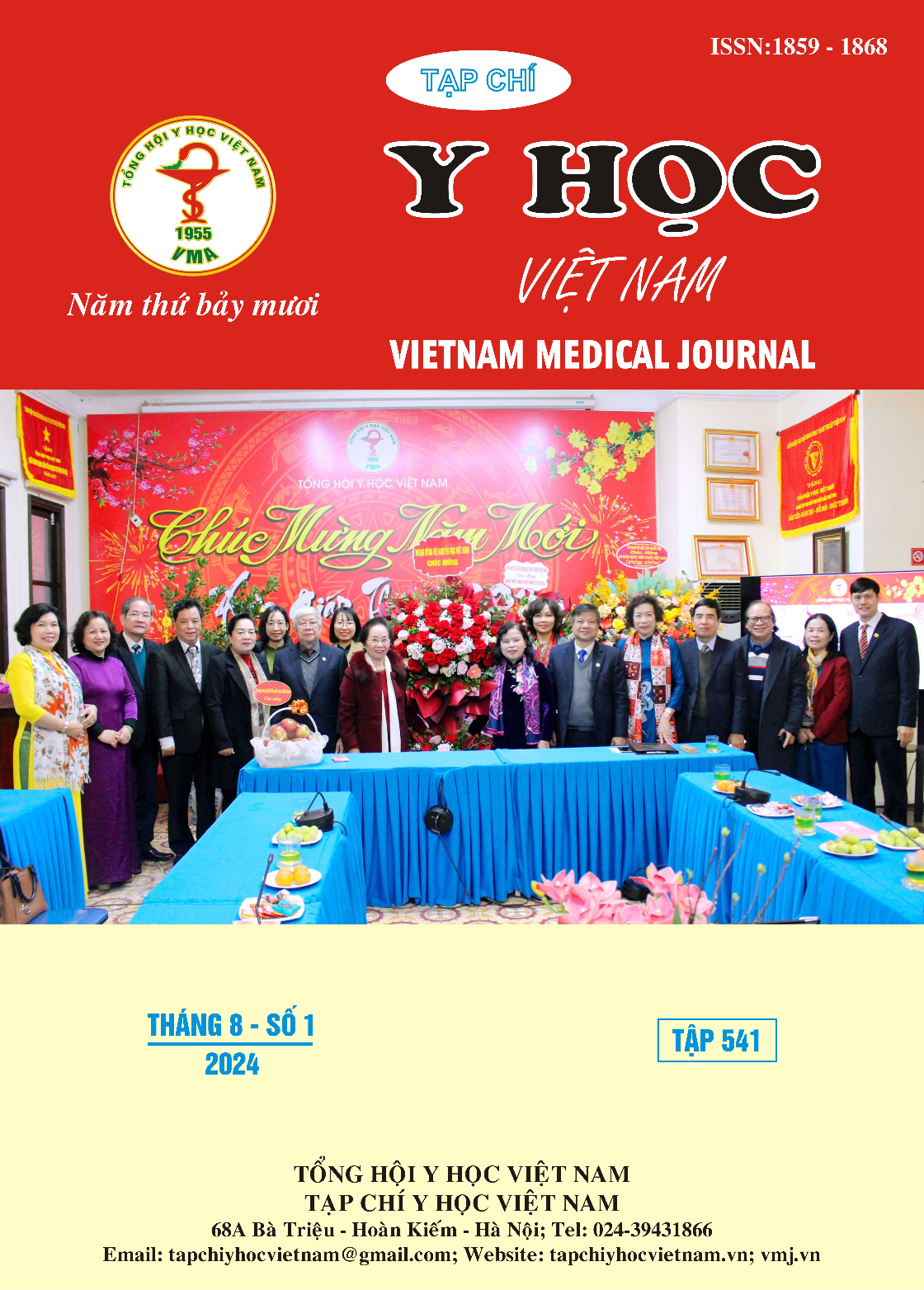THE CLINICAL SYMPTOMS, ENDOSCOPIC AND HISTOPATHOLOGICAL FEATURES OF PATIENTS WITH EOSINOPHILIC GASTROENTERITIS
Main Article Content
Abstract
Background: Eosinophilic gastrointestinal diseases (EGIDs) are getting more recognition, but data in Vietnam are mainly from case studies. Our study aims to describe the clinical symptoms, endoscopic and histopathological features of EGID patients. Method: A case series was conducted at Hanoi Medical University Hospital and Institute of Gastroenterology and Hepatology from 6/2021 to 12/2023 in all patients diagnosed with EGIDs (esophagus/stomach/small intestine/colon). Clinical characteristics and endoscopic images were recorded, histopathological images were assessed, and the number of eosinophils was counted. Results: A total of 21 patients were included, with GI lesions found in the following locations: esophagus (11 patients, 52.4%), stomach (5 patients, 23.8%), duodenum (2 patients, 9.5%), colon (3 patients, 14.3%). The most common symptoms of the upper GI tract was reflux (19.0%), and abdominal pain (23.8%) was the most prevalent symptom of the lower GI tract. The EREFS classification for eosinophilic esophagitis showed that the most common features were Rings (R: trachealization); Exurade (E: dots, white plaques). For the stomach, the most common endoscopic features were edematous and multiple raised erosions in the whole stomach. For the colon, the lesions include deep ulcers near the ileocecal valve and multiples patchy inflammation in the colon. Patients were mainly biopsied with 2 pieces (8 patients, 38.1%) or more than 4 pieces (8 patients, 38.1%) for histopathological examination. Regarding histopathological features, the median (IQR) eosinophil count at locations was 27.0 (20.0-38.5), min-max 15-150. The study recorded 3 patients with histopathological results after treatment, all showing responses.Conclusion: EGIDs is a group of diseases with diverse and non-specific clinical symptoms. Some typical endoscopic features should be noted for taking biopsies and histopathological examinations, then providing additional evidence for diagnosis, treatment, and monitoring of this patient group.
Article Details
Keywords
endoscopy, histopathology, eosinophilic esophagitis, eosinophil, gastroenteritis
References
2. Jensen, E.T., et al., Prevalence of Eosinophilic Gastritis, Gastroenteritis, and Colitis: Estimates From a National Administrative Database. J Pediatr Gastroenterol Nutr, 2016. 62(1): p. 36-42.
3. Dhar, A., et al., British Society of Gastroenterology (BSG) and British Society of Paediatric Gastroenterology, Hepatology and Nutrition (BSPGHAN) joint consensus guidelines on the diagnosis and management of eosinophilic oesophagitis in children and adults. Gut, 2022. 71(8): p. 1459-1487.
4. Lucendo, A.J., et al., Guidelines on eosinophilic esophagitis: evidence-based statements and recommendations for diagnosis and management in children and adults. United European Gastroenterol J, 2017. 5(3): p. 335-358.
5. Dellon, E.S., et al., ACG clinical guideline: Evidenced based approach to the diagnosis and management of esophageal eosinophilia and eosinophilic esophagitis (EoE). Am J Gastroenterol, 2013. 108(5): p. 679-92; quiz 693.
6. Warners, M.J., et al., Systematic Review: Disease Activity Indices in Eosinophilic Esophagitis. Am J Gastroenterol, 2017. 112(11): p. 1658-1669.
7. Redd, W.D. and E.S. Dellon, Eosinophilic Gastrointestinal Diseases Beyond the Esophagus: An Evolving Field and Nomenclature. Gastroenterol Hepatol (N Y), 2022. 18(9): p. 522-528.
8. Uppal, V., P. Kreiger, and E. Kutsch, Eosinophilic Gastroenteritis and Colitis: a Comprehensive Review. Clin Rev Allergy Immunol, 2016. 50(2): p. 175-88.
9. Alfadda, A.A., M.A. Storr, and E.A. Shaffer, Eosinophilic colitis: an update on pathophysiology and treatment. Br Med Bull, 2011. 100: p. 59-72.


